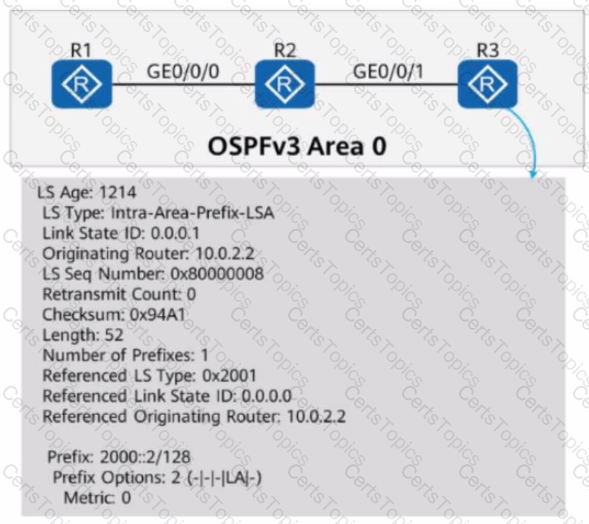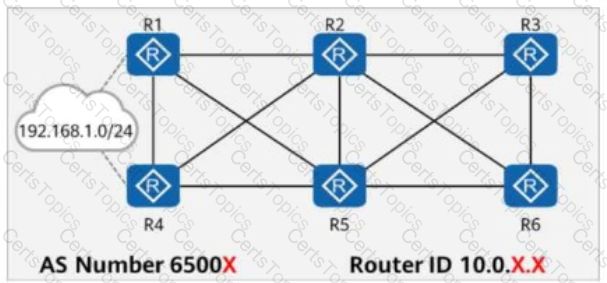On the OSPFv3 network shown in the figure, OSPFv3 is enabled on the interfaces connecting R1, R2, and R3. The router ID of each router is 10.0.X.X, where X is the number of the router. If you check detailed information about an LSA on R3, the command output shows that the LSA is generated by R2 and describes the IPv6 prefix address associated with the Router-LSA.

On the network shown in the figure, EBGP peer relationships are established between neighboring routers through directly connected interfaces.
The router ID of each router is 10.0.X.X, and the AS number is 6500X, where X is the number of the router.
Both R1 and R4 have static routes to 192.168.1.0/24, which are imported to BGP through the import-route command.
The aggregate 192.168.1.0/16 detail-suppressed command is configured on R2.

Which of the following is the path for traffic from R3 to 192.168.1.0/24?
MPLS can carry multiple network protocol services, including unicast IPv4 services, multicast IPv4 services, unicast IPv6 services, and multicast IPv6 services.
In the figure, packets are forwarded based on MPLS on the network.
When PE2 receives a packet from P2, what is the label value carried in the packet?

Options: